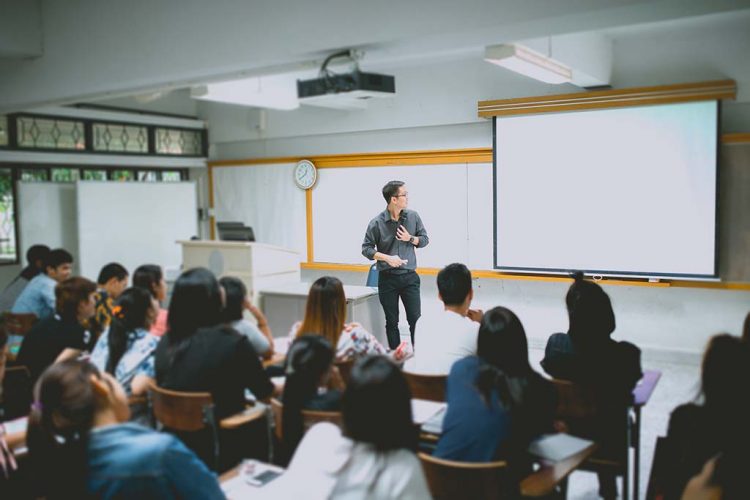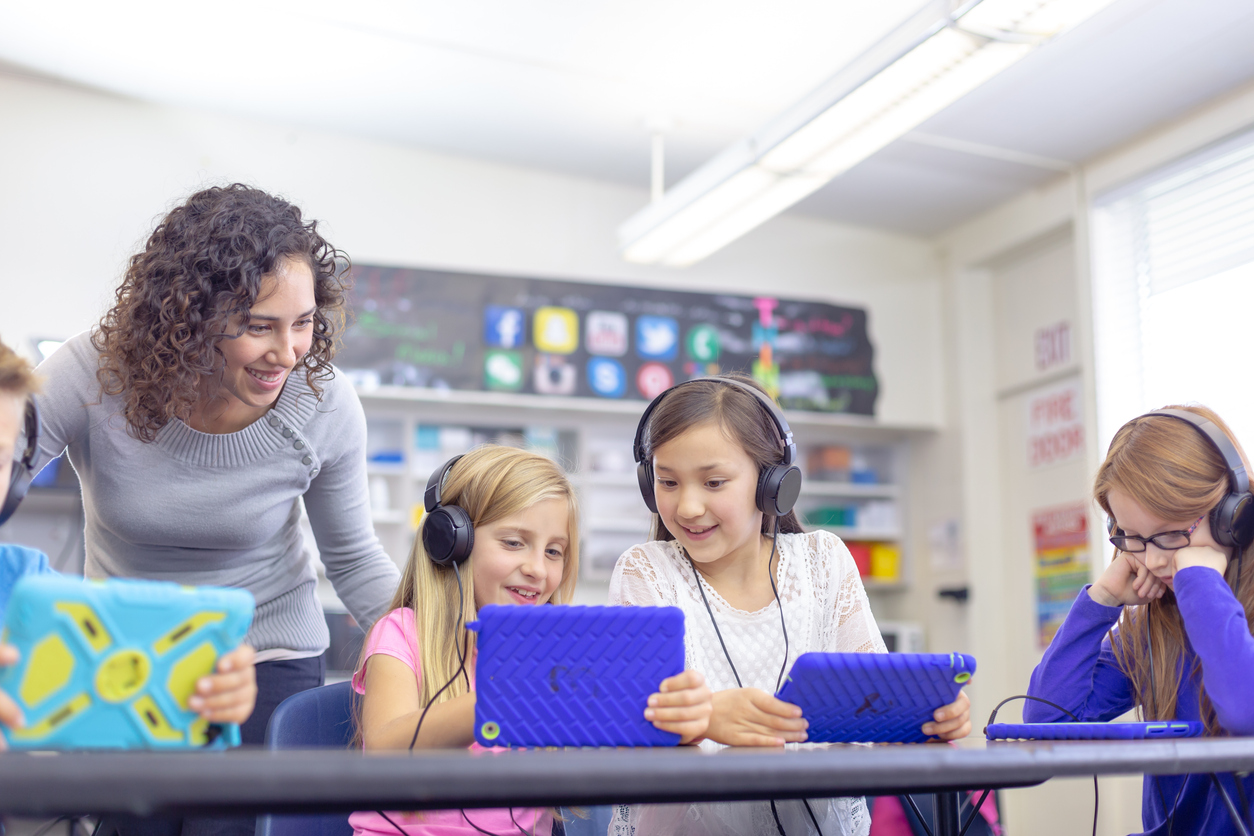Comprehensive Primary Science Tuition Singapore for Primary School Students
Comprehensive Primary Science Tuition Singapore for Primary School Students
Blog Article
A Comprehensive Overview to the Different Discovering Methods in Key Scientific Research Direction
The expedition of varied knowing approaches in main science instruction presents an opportunity for educators to boost trainee engagement and comprehension significantly. By examining hands-on discovering strategies, inquiry-based techniques, and collaborative approaches, we can identify efficient methods that deal with numerous discovering designs. Additionally, the integration of technology and differentiated instruction plays a crucial function in fostering an inclusive environment. The question stays: how can these techniques be properly implemented in the classroom to maximize their influence? The answer hinges on a closer examination of each approach and its implications for teaching science.

Hands-On Knowing Strategies
Hands-on understanding techniques play an essential function in main science instruction, involving trainees in active exploration and trial and error. These approaches permit learners to communicate directly with phenomena and materials, cultivating a deeper understanding of scientific concepts. By utilizing manipulatives, models, and real-life experiments, educators create an environment where trainees can observe, assume, and examine their concepts.
Such techniques not just enhance understanding however additionally cultivate critical reasoning and problem-solving skills. When students join tasks like building basic devices, growing seeds, or conducting chain reactions, they are motivated to ask inquiries and seek responses via their own observations. This experiential method aids to demystify intricate clinical concepts, making them much more relatable and accessible.
Additionally, hands-on knowing advertises partnership among peers, as trainees often operate in teams to conduct experiments or share findings. This teamwork not only enhances their learning experience however also establishes essential social skills. Inevitably, incorporating hands-on techniques in primary scientific research guideline promotes a lifelong love of discovering and interest regarding the environment, laying a solid structure for future scholastic pursuits in scientific research and past.
Inquiry-Based Understanding
Inquiry-based knowing is a training approach that urges pupils to ask inquiries, check out phenomena, and create their own understanding of scientific concepts. This technique shifts the focus from typical teacher-led guideline to a much more student-centered experience, where students take the initiative in their educational journey. By cultivating inquisitiveness, inquiry-based understanding advertises deeper involvement with the material, allowing trainees to explore topics in a significant context.
In method, this technique typically includes hands-on experiments, monitorings, and crucial thinking activities that straighten carefully with the clinical approach. Students are encouraged to formulate theories, design examinations, and evaluate information, which cultivates important skills such as logical and analytical thinking. The duty of the teacher in this framework is to promote exploration, assisting students via the query process while encouraging independent thought and partnership.
Furthermore, inquiry-based learning supports a sense of ownership over the discovering procedure, encouraging trainees to go after understanding actively. This technique not just boosts understanding of clinical principles however likewise promotes a lifelong love for understanding, equipping pupils with the skills required to browse a progressively intricate world.
Collaborative Learning Approaches
Collaborative understanding strategies equip students to engage in purposeful interactions with peers, promoting a common duty for their educational end results. In key science direction, these strategies encourage students to work together to discover clinical principles, resolve issues, and carry out experiments (primary science tuition Singapore). By joining group activities, trainees can leverage diverse point of views, enabling richer understanding and retention of scientific expertise
One trick aspect of joint discovering is the emphasis on interaction abilities. Students have to verbalize their ideas, pay attention actively to others, and work out concepts, all of which are vital proficiencies in both scholastic and real-world contexts. This social communication not only boosts their understanding of clinical principles yet likewise promotes synergy and dispute resolution skills.
In addition, collective understanding commonly results in increased inspiration and engagement. They are a lot more likely to take ownership of their knowing trip when investigate this site students see the worth of their contributions within a team. Educators can facilitate this process by designing structured team jobs that straighten with curriculum objectives while giving guidance on effective collaboration techniques. Overall, incorporating collective learning techniques in key science direction cultivates a dynamic learning setting that prepares pupils for future scholastic and social difficulties.
Innovation Integration in Science
The integration of technology in key scientific research guideline boosts learning experiences by giving innovative devices and sources that sustain various training methodologies, consisting of collective discovering - primary science tuition Singapore. Using digital systems, simulations, and interactive applications permits pupils to involve deeply with clinical concepts, facilitating an extra hands-on method to discovering
Digital research laboratories, for circumstances, make it possible for learners to conduct experiments securely and effectively, promoting inquiry-based knowing. These devices can simulate real-world clinical situations, allowing pupils to imagine complex processes that would be tough to replicate in a traditional classroom setting. Technology promotes communication and collaboration amongst pupils, as they can share searchings for and work with each other on projects through online platforms.
In addition, multimedia discussions and educational video clips can improve lessons by accommodating diverse discovering designs, making abstract concepts extra easily accessible. Data analysis devices additionally encourage trainees to collect and analyze scientific data, reinforcing essential believing abilities. Overall, the calculated consolidation of modern technology in primary science guideline not only boosts engagement however likewise prepares pupils for a technologically innovative culture, furnishing them with vital skills for future clinical endeavors.
Distinguished Instruction Strategies
Distinguished direction strategies are essential for attending to the varied demands of learners in primary science education and learning. These techniques allow educators to customize their mentor techniques to suit differing abilities, interests, and discovering styles within the classroom. By employing separated instruction, teachers can produce a comprehensive environment that cultivates engagement and improves understanding of scientific ideas.
One reliable method is to use adaptable organizing, which allows students to collaborate with peers at comparable skill levels or with varying viewpoints. This technique urges peer knowing and advertises vital reasoning. Furthermore, providing options in jobs can empower students, permitting my response them to choose projects that reverberate with their passions while still satisfying curricular purposes.
Furthermore, integrating tiered projects Get More Info is one more valuable strategy. Deliberately tasks with varying levels of complexity, educators can make certain that all pupils are suitably tested, despite their efficiency. Utilizing developmental analyses to assess recognizing more allows instructors to readjust their training approaches dynamically, making sure that each student receives the support they need.
Eventually, applying distinguished instruction techniques in key scientific research education not only improves trainee learning results however also cultivates an interest for scientific research, preparing students for future academic searches.

Verdict
In summary, effective primary science instruction requires a diverse method that includes hands-on learning, inquiry-based approaches, and collaborative techniques. The integration of technology and set apart guideline even more deals with varied learning designs, cultivating a setting conducive to exploration and critical thinking. By executing these strategies, teachers can improve pupil involvement and understanding, inevitably nurturing a lifelong enthusiasm for science and questions. Such detailed methodologies are necessary for establishing notified and interested future researchers.
The expedition of diverse knowing approaches in main scientific research instruction presents a possibility for instructors to boost trainee engagement and comprehension significantly.Hands-on discovering strategies play a pivotal duty in primary science direction, involving trainees in energetic exploration and testing.Inquiry-based understanding is an instructional method that encourages pupils to ask questions, examine phenomena, and build their own understanding of scientific concepts.Joint understanding approaches empower students to involve in meaningful communications with peers, fostering a common duty for their academic results. Overall, integrating collaborative knowing strategies in main science guideline grows a vibrant discovering atmosphere that prepares pupils for future academic and social difficulties.
Report this page